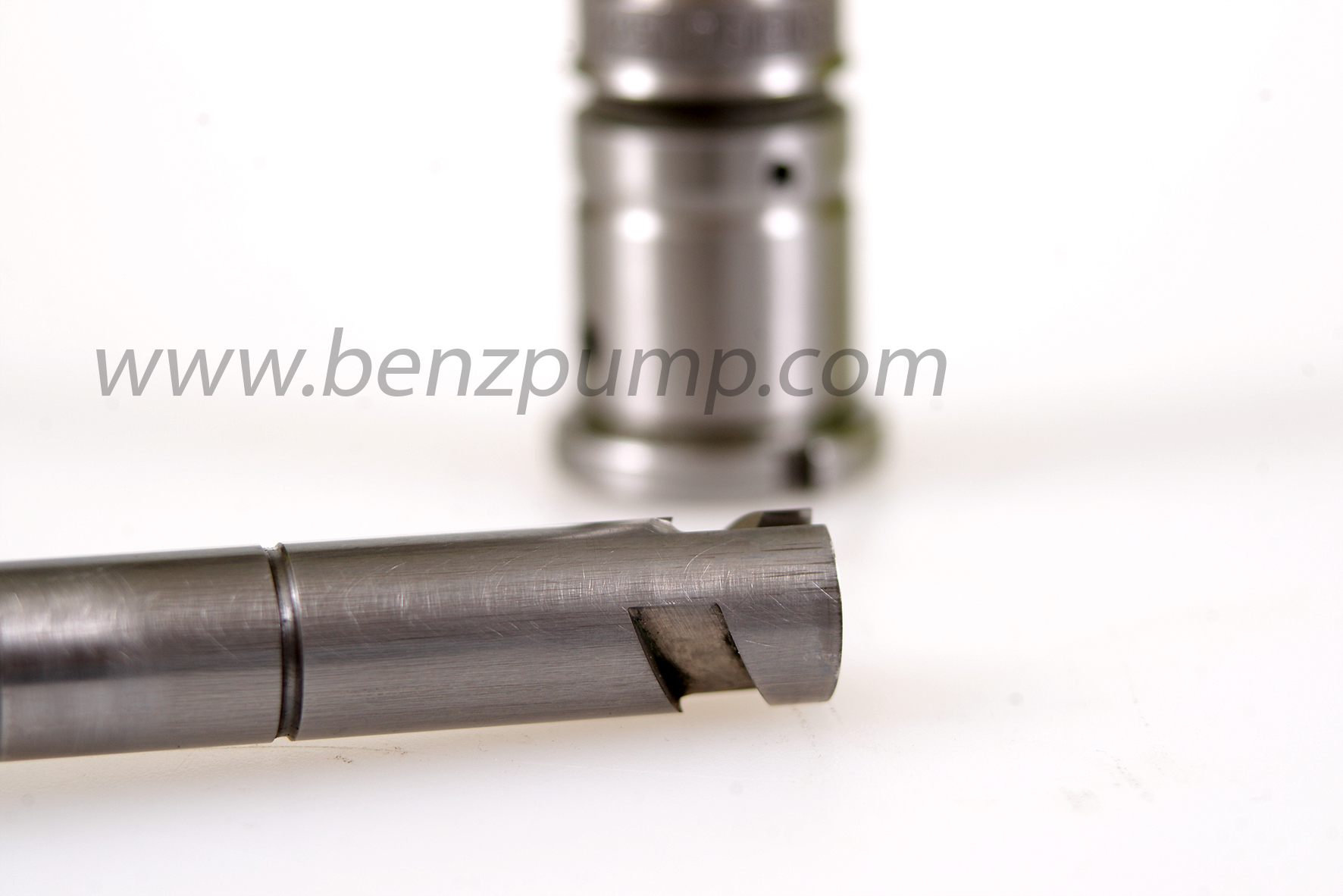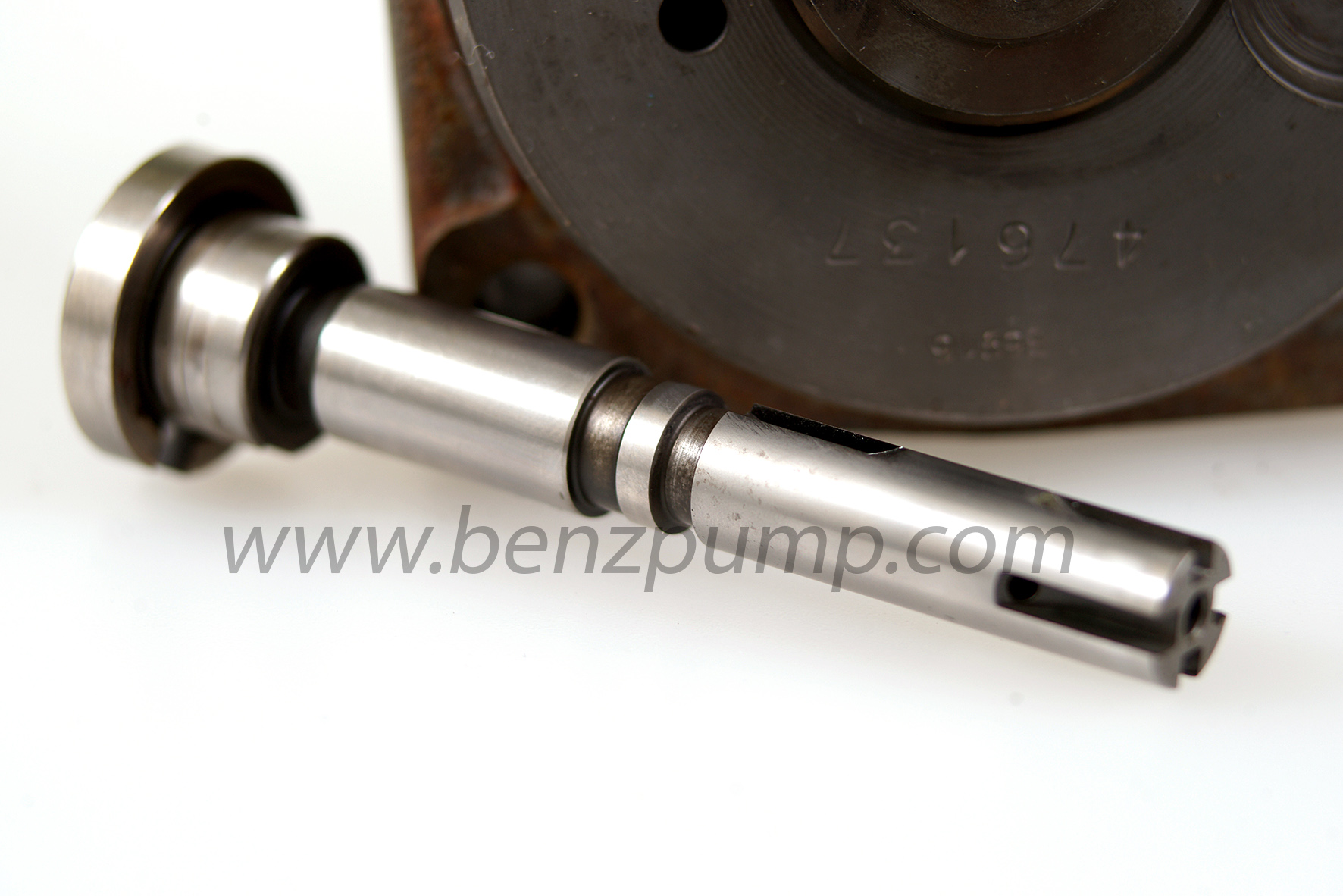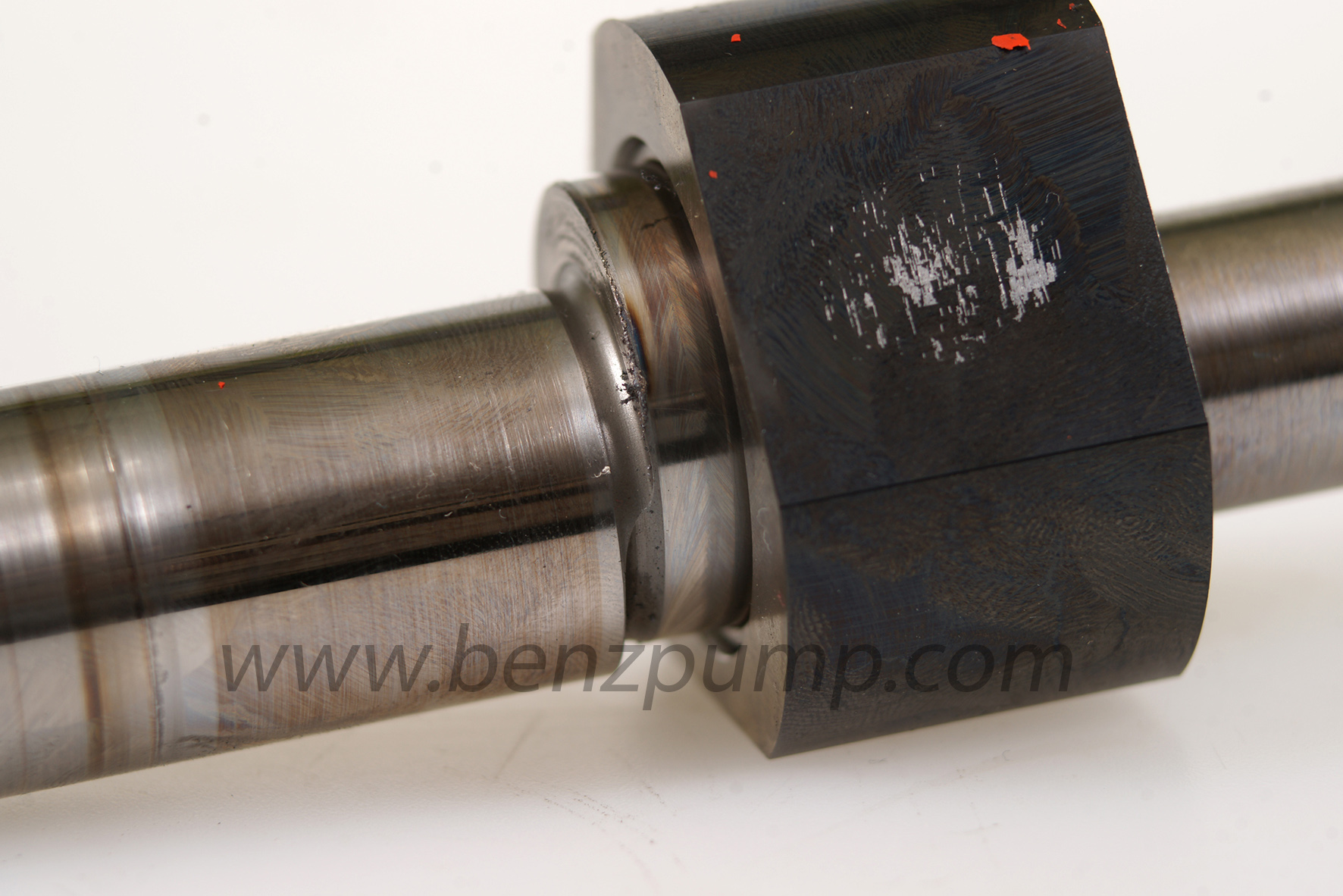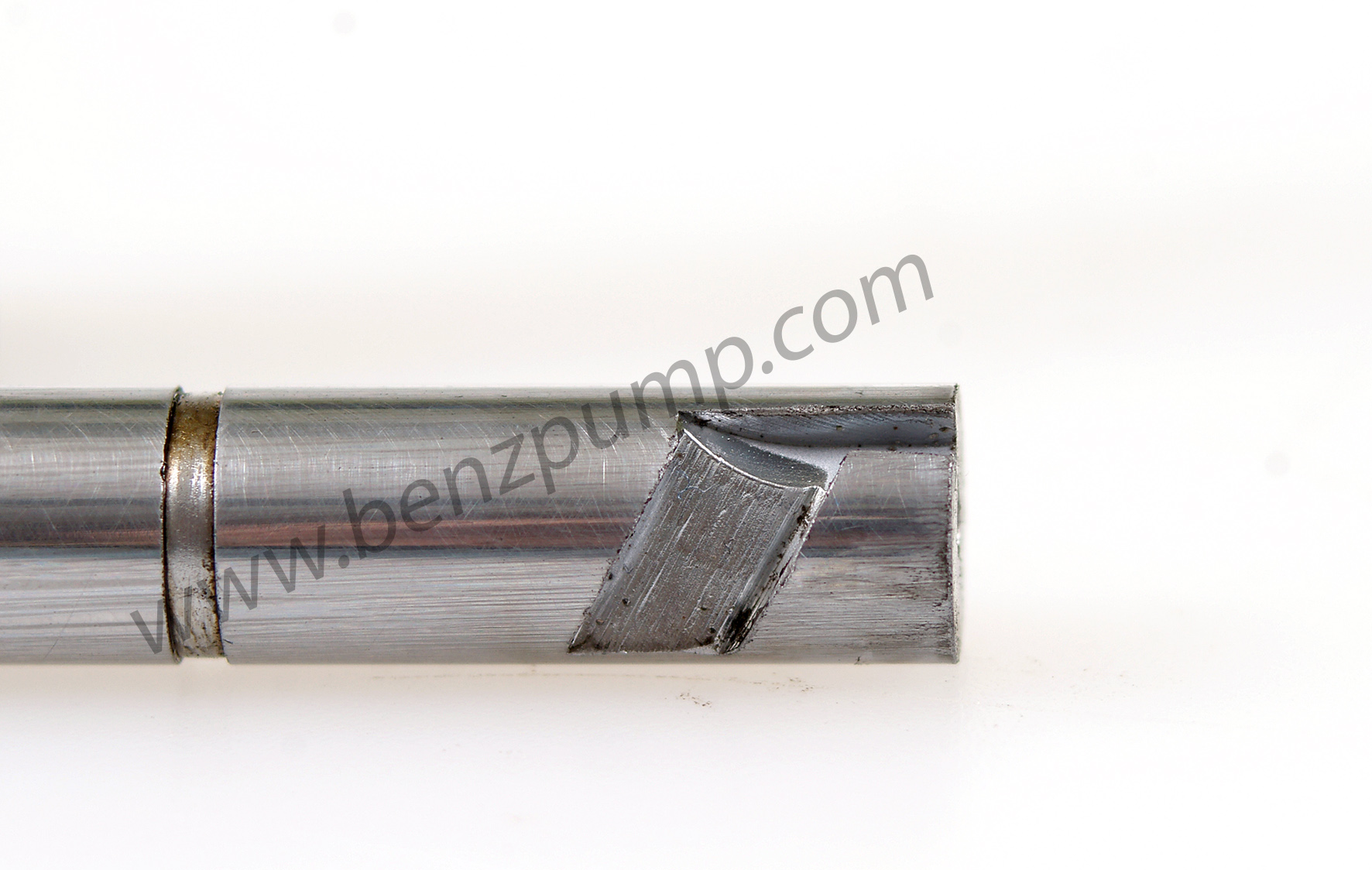Regeneration of diesel injection pumps
Regeneration of injection pumps and injectors for antique cars, tractors and stationary engines
A bit of history:
 Since motor vehicles began to be produced, they invented various propulsion units and the fuels used to them . In the 1920s, diesel engines were recognized as the future in the automotive industry, and Robert Bosch hit the topic hard. In 1922, work began all over, and in 1924 the injection pump in the truck was tested.
Since motor vehicles began to be produced, they invented various propulsion units and the fuels used to them . In the 1920s, diesel engines were recognized as the future in the automotive industry, and Robert Bosch hit the topic hard. In 1922, work began all over, and in 1924 the injection pump in the truck was tested.
In 1927, Bosch launched the popular in-line injection pump. Car manufacturer Man was one of the first to use it. Despite the fact that competition for Bosch was growing, it took the market strongly, and we could find its systems in many brands known until today, such as in the more exotic ones, e.g. Deutz, Berliet, Brossel Freres, Hanomag, Henschel, Krupp, Prague , Saurer and others.
In 1936, the pump was installed in the engine of a passenger car for the first time. The first pioneers of this direction were Mercedes (Mercedes-Benz 260D) and Hanomag (1.9-liter engine – mounted on the Sturm model from 1938).
At the very beginning, the pump was mainly used to precisely measure the fuel dose per engine duty cycle (Bosch modeled on oil engine pumps), and after then in 1931 that the pump was combined with a speed controller, and then with the injection angle accelerator. Of course, apart from Bosch, there were other manufacturers who sooner or later had an affair with the injection pump. Examples of companies are Friedman Meier, Kugel Fischer, CAV, Lucas, WSK Mielec, Motorpal, WSK Poznań, Simms, Nippondenso, Roto-Diesel and others. An interesting fact here may be the CAV company, which in 1931-1937 merged with Bosch, creating CAV-Bosch Ltd and thus starting the production of injection pumps. But then the fate of the companies diverged, and Bosch shares were taken over by Lucas. Until the end of the seventies of the twentieth century, the pumps had the name CAV, then it was replaced by Lucas, and now Delphi. In the last decade, the main players on the diesel markets are Bosch and Delphi, but Simens and Japanese Denso breathe down them’s neck.
Currently, when the seventies and eighties become historic for us, on the oldtimer market you can turn to the various disappearing popular diesel cars. Some of us are afraid of them a little because they smoke a lot…. because it is noisy … because it is too laborious, … because it is difficult to start engine in winter, etc. Well, you can’t force anyone to diesel, but who will drive a vintage cars in winter? Even so, the car will stand in the garage.
Such vehicles worth recommending are English vehicles equipped with Perkins engines, they can often be found in Land Rover. These are loud and powerful direct injection units. Three or four-cylinder perkins were installed in small vehicles. The engines are unbreakable, even after a long standstill relatively easy to start. The pumps used are usually CAV radial, type DPA with a centrifugal or hydraulic regulator.
Other noteworthy cars are Mercedes. Most often on the market you can find models from the seventies and eighties (models 115, 123, 124), but an interesting treat can be a vehicle below the seventies. The engines in them are also unbreakable. Not like the new models, when the timing chain barely 300,000 km withstands. When the client asked how much he could do on the chain, it was answered:
– two engine repairs,
and a well-maintained car could even drive a million to the major car refurbishment.
The Mercedes engine was equipped with a Bosch in-line pump, size M, first with a pneumatic regulator, and in the seventies changed to mechanical with many dose corrections (positive and negative depending on the current load characteristics). Fuel injection was carried out through plug injectors into the initial combustion chamber. It gave quieter work engine, but also bigger problems with starting a cold engine. Important in these cars are glow plugs, at first slow-heating, triggered directly by the driver, and then controlled by an automatic device. In younger models, it is worth paying attention to the 300D five-cylinder engine, which gives us better comfort, especially when accelerating.
The next diesels are French production, the entire Peugeot 204, 304, 404, 504, 604 series in this sport version 404. D and 2.5D. Fuel injection system depending on the country, into the CAV system (later Lucas) or Bosch. CAV pumps for DPA models, and in the eighties a more modern system with a DPC pump. Mounting Bosch pumps: first a VA distributor pump, then a VE pump – popular until today. Fuel injection with pre-chamber through pintle injectors fitted with a tight change method or screwed in.
An interesting thing about Peugeot was the insertion of the transverse diesel engine, which was first made in the 204 model. Peugeot available some engines mounted in the Sierra Sierra 2.3D, 2.5D, and 2.5TD
Opel has also been installing diesel engines for years. Opel Rekord with a 2.1D engine was such a popular car, and 2.3D from 1982 (later Opel Omega 2.3d and 2.5TD). The engine has a very interesting injection pump mounting – pumps not found in other manufacturers – the pump is screwed vertically. High-speed indirect injection engine, the fuel passes by screwing in injectors with plug-type atomizers. Bosch VE pump. For less advanced problems it is the answer to the power supply system. The reason is the vertical pump system to be connected.
Opel Kadett can become a cheap vintage car for everyone, equipped with diesel since 1979. I assume that this model is hard to find in good condition. But If you find that one , you still have to replace the camshaft, which just falls apart (even worse in the successor 1.7D). Rather weak engines. Comparing them e.g. VW Golf 1.5 or 1.6 Opel will do half the mileage of what VW.
High-speed engine with pre-combustion chamber, injectors screwed into the aluminum head with a pintle atomizer. Bosch VE pump, or very rarely occurring LUCAS pump type. DPC.
The car that conquered the market was the VW Golf 1.5d released in 1975. Economical, durable, but you won’t go crazy with this car. Bosch VE pump used, fuel injection via pintle injectors to the initial combustion chamber. There are models with an interesting CAV – Lucas injection pump, model DPA with a hydraulic speed regulator. Later, this engine with increased capacity to 1600 ccm, in many varieties was successfully used in all Volkswagen varieties. In the second series of VW Golf a turbocharged engine was strengthened, which also changed all the equipment together with the injection system, where a Bosch VE injection pump with boost pressure regulator (LDA) was used.
Another strong brand on the market was and stil lis the BMW concern since the sixties. The most common diesel models are 324D, 524D, as well as TD versions, later 325D and 525.
BMW is a well-known sports car manufacturer with increased power. This also didn’t miss in diesel engines. A large six-cylinder turbocharged propulsion unit was put into the engine compartment, first with 115 hp, and in later models (525TDS) with up to 143 hp.
The engines in BMW are very durable, but due to six cylinders more expensive to repair.
The fuel supply components used are Bosch, first the VE distributor injection pump with LDA, and since 1986 the VE EDC (electronically controlled pump). Fuel injection made with injectors with a pintle tip into the combustion chamber.
During the seventies there are still many diesels to look out for, me. Audi 80, Ford Escort 1.6D (the later version of the 1.8D engine was emergency). Interesting may be Fiats in which you can often meet a croaking, slightly unsuccessful 1.7D engine. Fiat also had a very successful unit, mounted in larger cars including Fiat Argenta with a capacity of 2.0D and 2.5D. Toyota with a 1.8D engine is also worth recommending.
Poland in diesel was a bit behind. It still found itself in the truck sector, but the small engine was not a strong point of Polish companies. However, we will find several vehicles with diesel engines. Certainly it is a Tarpan with a three-cylinder Perkins unit (straight from the Ursus C-360 3p tractor), as well as ŻUK and Nysa with a four-cylinder Andoria with the designation 4C90. The Andoria engine is the only mass-produced diesel engine in fully Polish design. After many upgrades and the use of the Common Rail system, it is mounted on cars ARO, Honker, LDV, Gaz Gazela, UAZ.
Returning to its older version, it can be seen that it is a high-speed engine with a pre-chamber, and the fuel is supplied by an in-line injection pump, first produced by WSK Mielec, but quickly changed to Motorpal from Czechoslovakia. Tenon injectors.
If anyone of us wants to buy a diesel car, is it worth knowing what the injection system is there or not?
I think that it is worth it, especially when buying a new car we can find various injection systems in it: Delhpi, Bosch, Siemens, Denso. If it is good, we will go through it for several years without failure, but when the failure will arise , it is worth having a system that can be serviced and not replaced with a new one. The cheapest can be repaired Bosch system, and in the case of Siemens we have to buy everything new.
It used to be the same. Manufacturers producing a vehicle wanting to become independent of suppliers and used (and use) two systems simultaneously. Hence, on the producers’ market we had many contractors for injection pumps and injectors, slowly purchased by larger corporations. From here, I decided to focus on a few producers from the old days. Undoubtedly, Bosch was one of the first to follow others.
Bosch has developed many injection pumps and injectors, the most popular are:
- In-line pump used in trucks and passenger cars.
- Mechanical distributor pump used since the sixties in passenger cars and smaller trucks, types VA and VE,
- EDC electronically controlled distributor pump (since 1986), replaced the mechanical centrifugal controller in the VE pump – first used in BMW
- EDC electronically controlled distributor pump (since 1986), replaced the mechanical centrifugal controller in the VE pump – first used in BMW
- Injection pumps with foreign drive – coming from the engine
- Pump injectors – mechanically and then electronically controlled (eg VW, Volvo FH10 cars)
- Pump-injector system, so-called PLD, used in trucks (most often in Mercedes).
- Injection pump with electronic control of injection quantity and torque VR and VP (Opel, Audi, VW, CAT, Man and others)
- Common Rail systems (most of currently produced engines)
- Hydraulic injection pump, type DPA
- Injector pump Bosch PES…A
- Injector Pump Bosch type: VA
In the 1950s, CAV – Lucas (now Delphi) introduced a distributor, radial injection pump called DPA with a centrifugal and hydraulic regulator. Later they were modernized and adapted to higher injection pressures by introducing the DPC and DPS pumps for direct injection. The next big step was the introduction of the EPIC electronic pump in the Ford Transit, DP200, DP210 and later Common Rail.
When we buy a historic vehicle that will not work well for us, it is worth looking for a company that has the knowledge and equipment for older types of pumps. When renovating the engine, it’s important to remember that some components cannot be cleaned thoroughly by conventional methods.
Often injection pumps come to our company after sandblasting and it turns out that the steamed elements, including pressure section, valves, pushers, etc. are blurred. Excessive chrome plating or galvanizing of engine components is a common problem with historic vehicles. This particularly happens with Mercedes owners. I have to warn you not to galvanize parts that are permanently joined together, such as bimetallic elements, pressure cans, correctors, sensors. After such renewal, these elements are completely unable to work, and some of them are no longer available for sale. For example, I will give a pump after flaking the aluminum reconstruction. After dismantling and assembling the pump, a test was carried out on the test bench, but the fuel doses were unstable, which in the case of an in-line pump is a strange phenomenon for a „pumping agent”. After a long search for an error, it turned out that when working on the test bench, the pushers hung without falling under the pressure of the spring to the end (during verification, the error was not noticeable). The defect was eliminated after dismantling the pump again, removing the minimal gradation after sandblasting – this time it worked, but it is not always the case.
Faults in injection pumps:
In some cases, it is worth using an ultrasonic cleaner with a suitable fluid, or a dry ice method (all in moderation).
Another pain for diesel owners is the repairs of pumps and injectors. A large number of main pump parts are still available on the market, but in the case of shortages there are also regeneration methods. Most often, the pumps fail:
- Pressing sections
- Shut-off valves
- Roller bearings
- Roller and tappets, especially when lubrication was lacking
- Lever seals
In turn, the injectors fail:
- Atomizers (injector tip)
- Sticks between the body and tip
- Injector tip nut
- spring
Many defects arise as a result of high mileage and exploitation, but there are failures associated with improper use, not always due to the owner’s reasons (e.g. flooding of unsuitable fuel)
The most common malfunctions that occur in diesel include:
Excessive smoking – black smoke (too much fuel)
Causes:
- Incorrect work of the injectors, so-called pouring or non-closing spray nozzles,
- Incorrect injection angle, usually too early, often due to interference with pump alignment with the engine
- High fuel dose – usually inadequate interference with the injection pump control
- Partly blocked air supply, eg crushed air hose or dirty air filter. In vintage cars, it happens that the filter is chosen from another vehicle, which sometimes blocks the flow.
Excessive smoking – white and bluish smoke (unburned fuel)
Causes
- Incorrect injection angle – usually too late
- Clogged fuel supply system, damaged supply pump – lack of efficiency, clogged tank vent – often during bodywork repairs, clogged fuel filter
- The ‚hanging’ needle of the injector tip
Excessive smoking – blue smoke
Causes
- Worn engine – oil consumption through piston rings, sometimes after heating the smoke decreases
- Worn valve seals
Heavy engine start
Causes
- Worn injection pump discharge sections
- Aeration of the fuel system
- Damaged glow plugs
- No valve clearances
- Incorrect injection angle setting
Reduced engine power
Causes
- Lack of injection pump performance – worn out components
- Incorrect work of the injectors
- Fuel or air filter clogged
- Incorrect injection angle
The listed defects are selected errors on older generation cars.
What is worth to know – a collection of important information:
The injection pump is to precisely measure the amount of fuel dose in relation to the need of the engine. This is done by reciprocating movement in the in-line pump, and in distributing pumps there is a rotary movement.
The difference between the in-line and distributor pump is that the in-line pumps have a discharge section for each cylinder, and the distributor pump has one distribution and discharge element and is smaller in construction.
The in-line pump is lubricated with engine oil and should be monitored, unless it has central lubrication from the engine.
Every distributor pump, especially Lucas (CAV, ROTO-DIESEL, Delphi) is exposed to a malfunction due to the fuel of poor chemical composition, because it is only lubricated with fuel.
Evaporation of mating elements, including injector tips and pressing sections, ranges from 7 to 11 microns and this is the reason not to use poor quality fuel.












Recent Comments
What others have to say